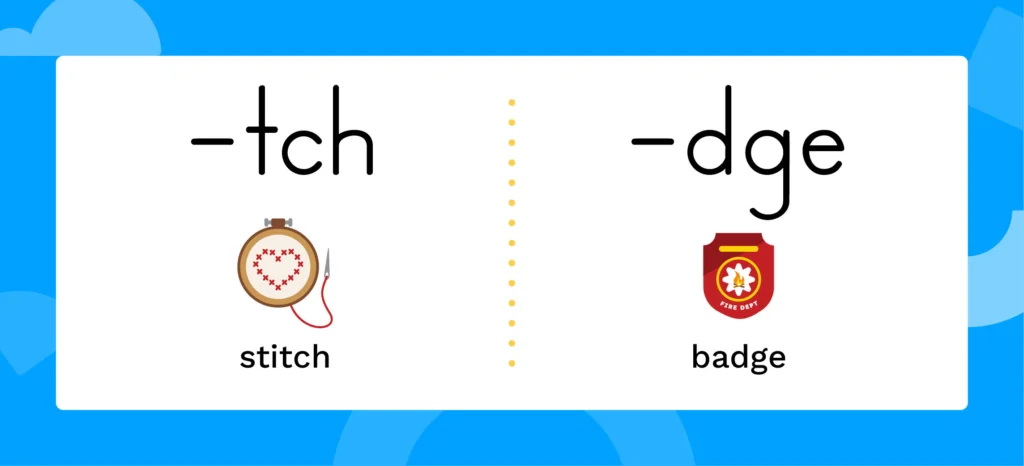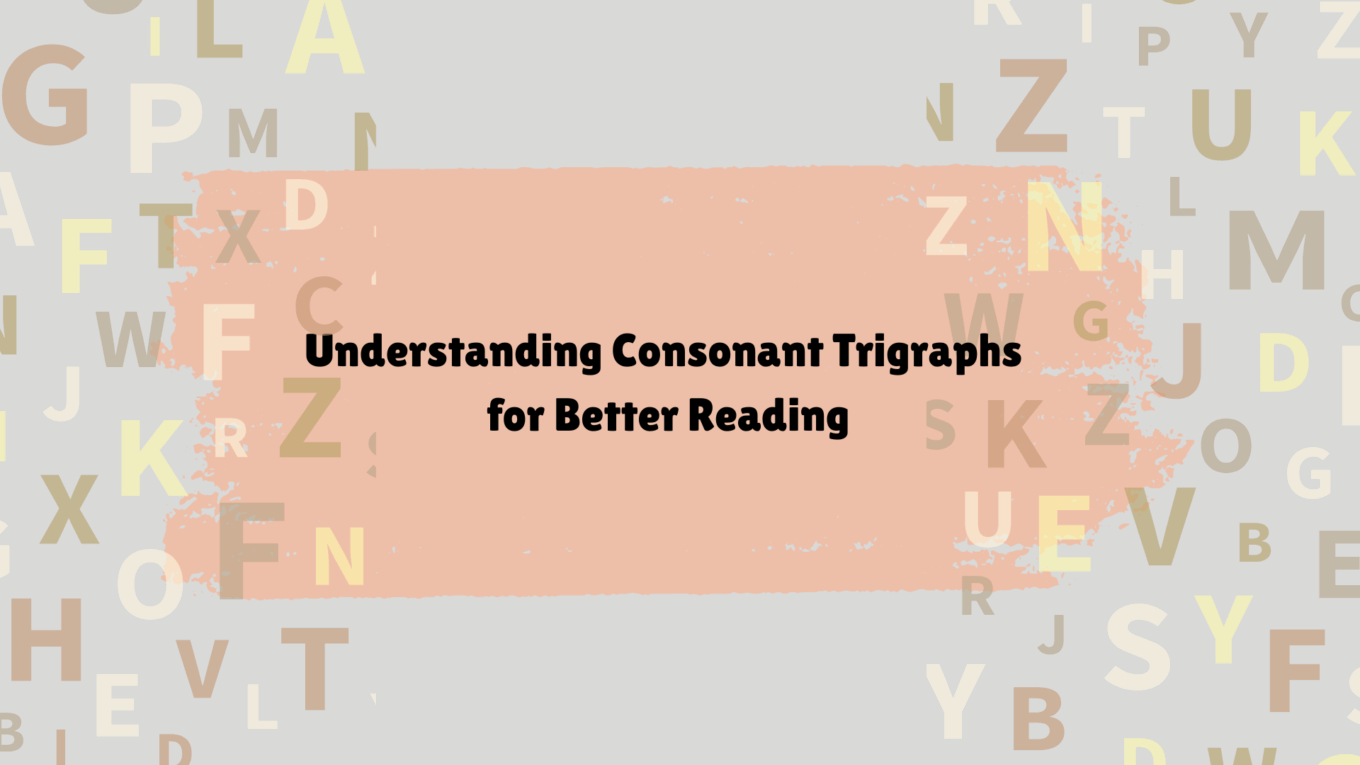Have you ever seen three letters work together to make just one sound? That’s where consonant trigraphs come in.
If reading or spelling sometimes feels tough, you’re not alone. One reason might be these tricky letter groups. Learning about them can really help us sound out words better and read with more confidence.
In this blog, we’ll talk about what consonant trigraphs are and how to spot and use them. We’ll go through simple examples and easy tips to help you understand.
By the end, reading these kinds of words will feel easier and clearer.
What is a Consonant Trigraph?
A consonant trigraph is when three consonant letters come together to make one sound. You don’t say each letter by itself. Instead, they work as a team. You only hear one sound when you say the word. This can be hard at first, but it gets easier with practice.
For example, in the word catch, the letters “tch” make just the “ch” sound. In bridge, the “dge” sounds like “j”. Even though there are three letters, there’s only one sound.
This is different from a digraph, which is just two letters that make one sound. For example, “sh” in ship is a digraph.
Trigraphs are different from regular letter sounds. You can’t just sound out each letter. You have to know that they work together. Learning trigraphs helps with reading and spelling. You start to recognize these sounds in words. That makes it easier to read new words and spell them correctly.
There aren’t too many trigraphs in English, but the ones we do have show up a lot.
Key Characteristics of Consonant Trigraphs
Trigraphs have three letters. But you only hear one sound. That’s what makes them different. You see three consonants, but they make a single sound when read.
One example is “tch” in match. Another is “dge” in fudge. There’s also “shr” in shrink and “squ” in square. All of these are trigraphs. They help form the sound at the start or end of a word.
Trigraphs are not the same as blends. In a blend, like str in street, you hear each letter sound. In trigraphs, you only hear one sound from all three letters.
They are also different from digraphs. A digraph is two letters with one sound, like “sh” in ship. A trigraph has three letters doing the same job.
Knowing trigraphs helps you say hard words more easily.
Examples of Consonant Trigraphs

One common consonant trigraph is “shr”. It makes one sound. You can hear it in the word shrink. Even though there are three letters, you only say one sound at the start. Other words with “shr” are shrimp, shrug, and shred.
Another trigraph is “tch”. This group is found in words like catch. The “tch” sounds like “ch”. You don’t say each letter alone. You just say one sound. You’ll also see it in match, witch, and pitch.
The trigraph “dge” is used in words like bridge. It makes a soft “j” sound. Even though there are three letters, the sound is just one. Other examples are fudge, badge, and edge.
Then we have “squ”. It starts with words like square. This trigraph sounds like “skw”. You can also find it in squash, squid, and squeeze.
These trigraphs show how three letters can team up to make one sound. When you learn to spot them, it makes reading and spelling easier.
Teaching Consonant Trigraphs
Teaching trigraphs can be easy and fun when you break it down into steps. Using clear steps and fun games can help students stay interested and learn faster.
Approaching the Topic to Students
When teaching trigraphs, it’s important to start in a way that makes students feel curious, not confused.
Begin by asking them if they’ve ever seen three letters that make just one sound. Give simple, fun examples like catch or bridge to get their attention.
Use real-life words they already know. This helps them feel more sure and ready to learn. Speak slowly and clearly, and repeat the trigraph sound a few times.
Show how the three letters work together and don’t need to be said one by one. Use the board or flashcards so they can see and hear at the same time.
Keep the mood light and friendly. Let them ask questions. Use a mix of speaking, reading, and writing so everyone can join in.
If students feel safe and involved, they will be more open to learning. Always start simple, then build step by step.
Fun and Interactive Activities
Trigraph Flashcards – Show a word on one side and a picture on the other. Students say the trigraph sound.
Word Sorting – Give students word cards to sort into groups based on their trigraphs.
Trigraph Bingo – Make bingo cards with trigraph words. Call out sounds or show pictures.
Whiteboard Races – Say a word, and students race to write it with the correct trigraph.
Trigraph Puzzles – Use cut-out letters to build words with trigraphs.
By using small steps, fun games, and clear words, students can enjoy learning trigraphs. With practice, they will improve at reading and spelling more challenging words.
Tips and Tricks for Teaching Trigraphs
- Use songs or rhymes to help students remember trigraph sounds.
- Focus on one trigraph at a time to avoid confusion.
- Let students color the trigraph letters in words to make them stand out.
- Use everyday words that students already know when teaching new trigraphs.
- Give short and fun practice every day instead of long lessons.
- Have students say the word, then write it, to connect sound and spelling.
- Play games that include reading, listening, and writing trigraph words.
- Use picture cards to help students link the trigraph to a real thing.
- Practice in groups to make learning more fun and less scary.
- Repeat often to help the brain remember the trigraph pattern.
Common Mistakes Students Make with Trigraphs
Students often make small mistakes when learning trigraphs, and that’s okay. One common mistake is saying each letter sound instead of just one.
For example, they may try to say t-c-h instead of the “ch” sound in catch. Some students confuse trigraphs with blends and think they should hear every letter.
Others forget letters or mix up trigraphs with digraphs, like writing brij instead of bridge. Spelling mistakes are also common because the sound doesn’t match how the word looks.
Conclusion
Now you know that a consonant trigraph is just three letters making one sound.
Try spotting trigraphs in books or signs around you. Say them out loud and see how they sound.
This blog gave you tips, tricks, and common mistakes to watch for. Use them to feel more sure when reading or writing. Just remember—practice helps a lot.
Keep learning little by little. Want to get even better with sounds and words? Check out our other blogs for more simple and helpful reading tips.




